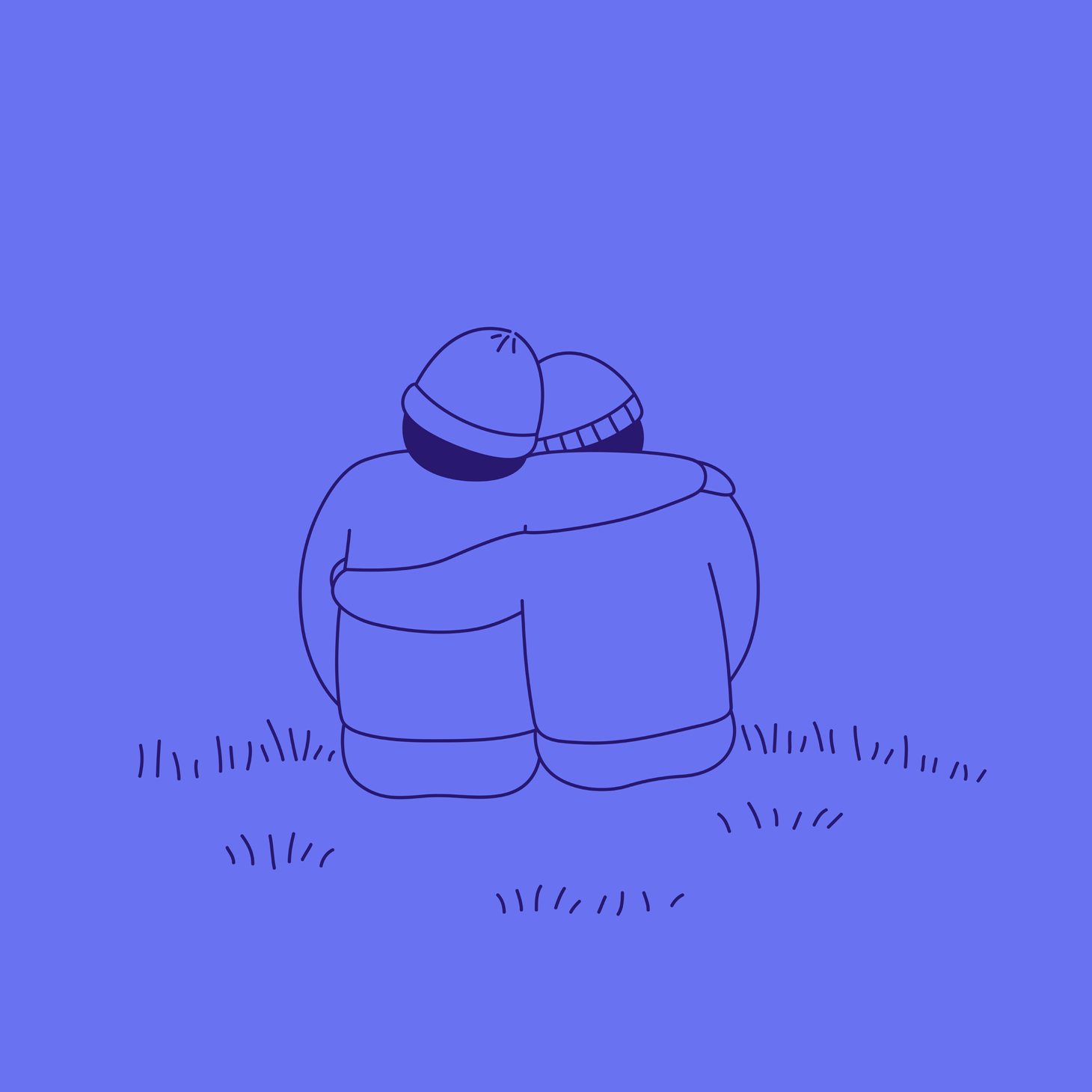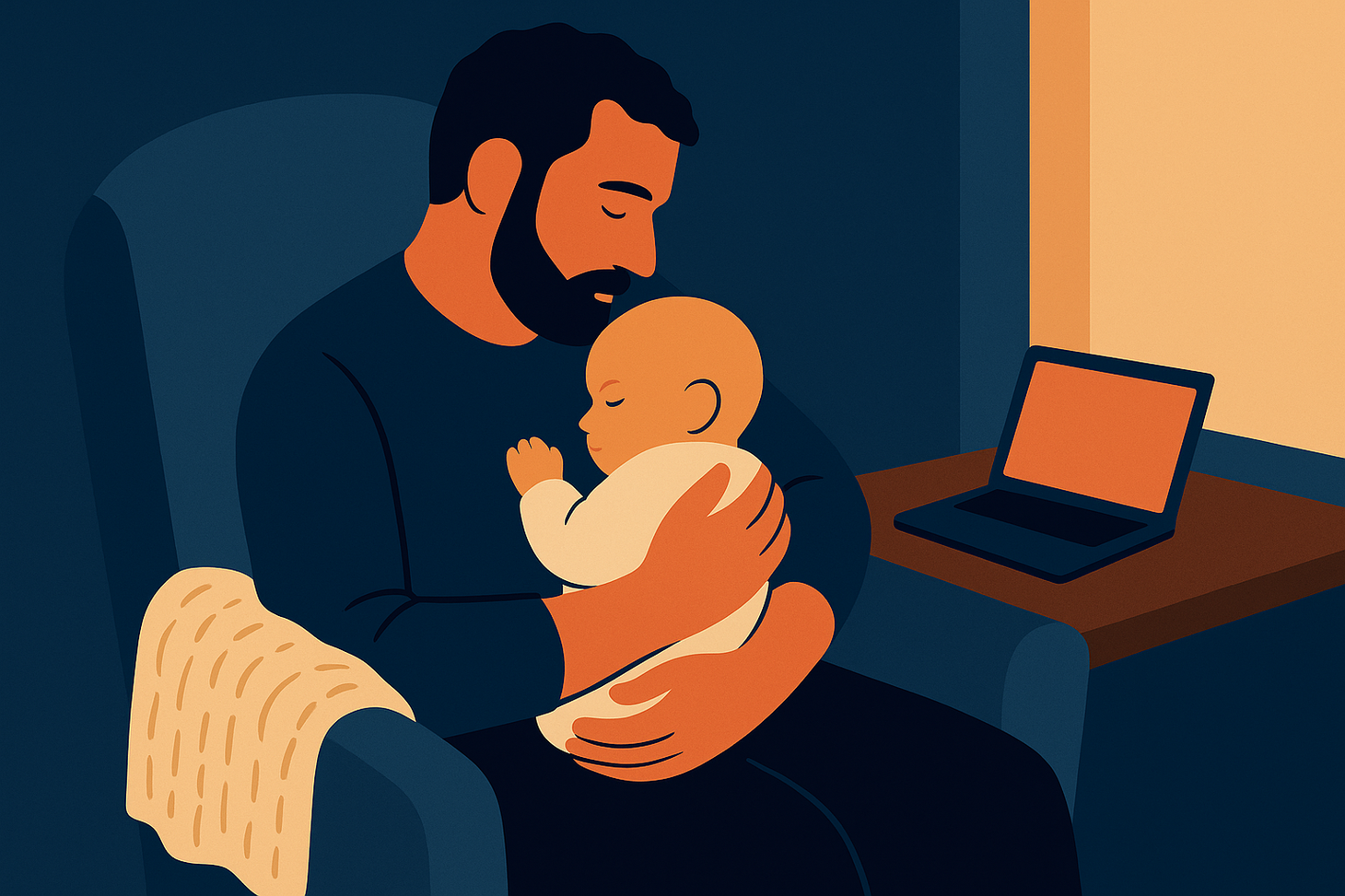Why we all fight with our partners (and what to do about it)
Find yourself in a difficult exchange with your romantic partner, co-founder, or friend? You aren’t alone.

Looking for some support? If now is the time to consider coaching (or a CEO peer circle) reach out here.
Instant regret
“You don’t even care enough to respond with something kind after I tell you I am hurting!” I said to my partner accusatorily. First came the words. Then regret. Then shame.
For all of my work in mindfulness and self-management, I still get lost sometimes.
In this particular moment, I was stuck...stuck in my story. One of the core fears I have carried since childhood was proving true: I was, in fact, unlovable, unworthy of care. Or so the voice in my head was screaming at me.
Why do we fight most with those we love?
I used to think the difficulties I experienced in my closest relationships, with my romantic partner, co-founders, kids, etc., were unique to me. But since becoming a coach years ago, I have been surprised and comforted by the realization that our conflicts with those closest to us are a shared human experience.
While one might assume our closest relationships to be the easiest, the least fraught with arguments and tension, the opposite is usually true.
Why is that?
Our closest relationships give us a place where we feel safe enough to fight, safe enough to show up as our authentic selves, safe enough to let our pain, fears, and patterns show. And while these relationships are also our greatest sources of support, love, and growth, days with difficulties inevitably come. And they can be deeply painful.
A significant percentage of the coaching sessions I sit in each week are spent helping brilliant leaders navigate the difficulties of close relationships.
What is happening that is causing us all such complexity in our close relationships?
Most of the time, we are repeating our engrained childhood patterns, our stuff, and the other person is doing the same.
Attachment theory teaches us we are subconsciously drawn to partners with whom we can safely work out our unresolved childhood experiences. People who match the patterns we experienced from our parents.
In my case, for example, I grew up with a father who had extremely high expectations. Expectations I felt I could never fulfill. As a result, I have always been drawn to romantic partners with high expectations (both of themselves and of me). If I fail to do my own work on myself and in my relationships, I can easily repeat the pattern I experienced with my father:
- I resent the pressure and expectations
- I fight
- I push away
- I let the story play out: ‘I am not enough, I do not measure up, I am not worthy of love.'
But I am not doomed to this repetition of my childhood patterns. And neither are you.
We can both find freedom. Let’s explore how.
Let’s look at this brief spat with my partner as an example. I would invite you also to call to mind a challenging moment you experienced recently in your own life recently and work it alongside me.
We are going to walk through how we can:
- Manage the moment through mindful consideration
- Come into resolution with the person in question and find a shared path forward through more skillful communication
Managing the moment
Let’s start by looking at how we manage the moment when the trigger happens. If we are in the heat of a harsh trigger, we might:
- Pause and take a breath
- If needed, take a break and request we return to the conversation at a later hour
- Step into owning our part
Let's talk about owning our part. My old coach and friend Jerry Colonna is famous for asking, “How am I complicit in creating the conditions I say I despise?” This powerful question invites me tow own my part. In every difficult interaction or argument, I am complicit in the presenting challenge or dynamic. Adult conversations in adult relationships begin with owning our own part in the dynamic.
Here are a few inroads to owning your part.
- Identify the patterns coming up for you
- Identify what is feeling at risk
- Own your own identify, value, and wellness
If you do this on the front end of a difficult conversation, you are already more than halfway to a successful outcome.
Let’s walk through each of these.
Identify the patterns coming up for you
What stories our beliefs are you experiencing in the moment? How old are these beliefs or stories? Which beliefs go back much further than the current interaction or perhaps even than your relationship with the person in question?
In my relationships, when the story is something like “This is not what I wanted for dinner,” that might be a present story or need. But when it is something like, “This person does not care for me; I am not worthy of love,” I can begin to see this is a story or pattern that goes way back before this interaction or relationship.
Identify what is feeling at risk
Another helpful question to hang out with is “What is feeling at risk?” This is a powerful way of seeing old patterns or beliefs that we may be projecting onto the current situation but which may not really be there.
When my partner (in my estimation) failed to respond with the kind word I desired, if you had slowed me down in the moment and asked me what was feeling at risk, I likely would have seen:
- Part of me sensed my lovability was at risk
- The wise, grounded part of me, would have voiced that very little was at risk.
Noting that part of me in that moment feels is lovability is at risk is an act of self-compassion. Letting the wise part of me come online and right-size the risk is an act of compassion for the relationship.
Own your own belonging
Often in our spiciest moments with our trusted allies, one of our core needs is feeling subconsciously at risk: sense of belonging.
As humans, we are hard-wired to desire belonging. Belonging was critical to our survival for much of our evolution. If the tribe kicked out one of our ancestors, they would have likely perished in the wilderness. We are thus wired to equate belonging with survival.
One of the biggest causes of our fights with our partners is our determination to look to them for belonging. And by extension for survival.
The good news is we can short-circuit this pattern, because neither our belonging nor survival are at risk.
When we find ourselves showing up in reactive patterns with our partners, reacting out of a subconscious need to belong (or for approval, etc.), the best thing we can do is take a moment to return to our own sense of independent approval and belonging.
If you do not have any practices for developing your own sense of belonging, approval, and value, here are a few things you might try:
- Take a self-love walk. Walk for 10 minutes while saying out loud everything you appreciate about yourself.
- Write yourself a three-page love letter. What do you love about yourself?
- Give yourself a hug and tell yourself out loud three things you appreciate about yourself.
These may sound silly, but they work. Furthermore, self-love and self-acceptance are perhaps the two most critical ingredients in joyful relationships.
Now that we have taken time to manage ourselves in the moment, let’s explore a couple of communication tools that offer each of us the possibility of closer, more aligned relationships with less suffering.
Better communication
Below are two simple tools for helping improve communication between you and your partner. You can use these at home or in the office. We are humans in both cases, and humans respond well to healthy, adult communication.
OFNR
OFNR is a tool brought to us by the teachers of non-violent communication. The idea of non-violent communication is to move from an old way of blame-based, inflammatory speaking to a new way of speaking wherein we own our experience and reaction.
Here is how it works:
O = Observe. What I am seeing or what I note happened. There is no appended meaning or story here, just the facts. (For example, you said "X". Not, "You were mean when...")
F = Feeling. How I felt or am feeling. Single word (i.e. happy, sad, jealous, etc.)
N = Need. What I need. This is a high-level general need. (i.e. "I need us to communicate openly" or "I need us to agree on shared plans in advance".)
R = Request. What my request is in this moment or situation. This is the specific ask at this time. (i.e. "Would you please send me your itinerary by Friday?" or "Could we commit to meeing once a week to align on our goals?")
The aim here is to leverage language that opens up communication and collaboration instead of shutting it down. When, by contrast, we use language that is hyperbolic (i.e. “You always say mean things to me!”) or story-based (“You didn’t think about my feelings!”) we push the other person into a defensive or shut-down posture.
Co-created requests
A complementary tool to OFN is co-created requests. Here, we are inviting a shared vision and co-creating a plan for achieving that vision.
The shared vision might be as simple as “I would like us to really feel like partners in the board room,” and the co-created requests might look something like this:
Co-founder #1: “Let’s review the materials together in advance.”
Co-founder #2: “Let’s commit to saying supportive things about each other in the room and holding criticism or concerns for later.”
Co-founder #1:”Let’s agree that we are safe enough to explore hard questions without either of us feeling exposed”
...etc....
By building the plan or brainstorming the agreements together, we begin practicing real partnership in the moment, establish shared language and understanding, and create mutual-buy-in on the approach.
I appreciate that you are here. If you were forwarded this email and it resonates, you can subscribe here.
A note on compassion
In all elements of relationship conflict, it can be helpful to hold ourselves and the other with compassion.
If your partner shows up in a particular shitty way, it may be helpful to say something to yourself like, “She is a good partner having a hard time.”
Or if you fall on your own face, as I did last night in my language, you may put your hand over your own heart space and say:
“I made a mistake. It is human to make mistakes. Let me be compassionate with myself."
The more we practice showing compassion for ourselves, the easier it becomes to offer compassion to others readily. This may be the single greatest ingredient in easing the tensions that can sometimes boil up in long-term partnerships.
Looking for some support? If now is the time to consider coaching (or a CEO peer circle) reach out here.
Wishing you ease and connection in your closest partnerships.
If I can be helpful in any way in the moments that are less easy, please let me know. I am here.
With love from LA,
Matt
Sanity Notes Newsletter
Join the newsletter to receive semi-weekly updates in your inbox.


